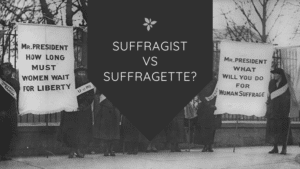Ever wonder why there are more men in politics, or why women – even in the 21st century – still do most of the housework?
Western society has been greatly influenced by a popular ideology called “separate spheres.” This doctrine of separate spheres was in effect for hundreds of years. It’s impossible to just flip a switch and erase this foundation of our society. That’s why it still has effects today.
According to doctrine of separate spheres, life as a whole was split into 2 “spheres”, public and private.
What is the public and private sphere?
- The public sphere was the domain of men, so they were able to freely move outside the home and participate easily in public life.
- The private sphere was where women belonged, taking care of household matters.
The theory was thought to reflect the “natural” differences and tendencies between men and women. Our society has started to move past this way of thinking only relatively recently.
Who came up with separate spheres?
The idea of women belonging in a separate domestic sphere has been around for thousands of years in the Western world, with its first known mention in Aristotle’s “Politics.”
The theory became more developed during the Industrial revolution, when more and more men would leave the home to work in factories for wages while their wives stayed at home to care for the household.
During the Age of Enlightenment in the 17th and 18th centuries, a theory called “biological determinism” became popular. Biological determinism held that people act according to their genes, and that men and women are inherently different due to their genetic makeup. This theory gave apparent scientific support to the idea of separate spheres.
What is the private sphere?
The private sphere was the world of domesticity, family, and home. According to the theory of separate spheres, this was thought to be solely the domain of women.
The proper or ideal woman, therefore, would be pure, submissive, and domestic in order to happily fulfill her duties of caring for the home and rearing children.
Even today, household work is still very gendered. According to a recent study, on an average day, 19% of men reported doing housework like laundry, cleaning and other tasks, compared to 49% of women.
What is the meaning of public sphere?
The public sphere was the domain of men, and consisted of work, politics, business: everything outside the home. It also included the free exchange of ideas in public discussion and debate.
These were all thought to be the sole domain of men.
An ideal woman, according to the separate spheres ideology, should not be interested at all in these things.

What effects did the theory of separate spheres have?
The ideology of separate spheres was so widely held and deeply enmeshed in society that it was very difficult for women to break free of the private sphere they were relegated to.
For example, because women were thought to have no place in politics, the women’s suffrage movement struggled to be taken seriously. Anti-suffragists used the theory of separate spheres to argue that women had no place voting or even voicing their opinions on politics.
This ideology also made it very difficult for women to attain higher education or pursue careers in fields like law or medicine, because they would be considered to be encroaching on the public sphere of men.
This is also why there were no public bathrooms for women until the 19th century – women were expected to stay at home.
When did the ideology of separate spheres die out?
The theory of separate spheres was popular and well-accepted up until the early 20th century.
By that time, scientists were beginning to question whether biological determinism was responsible for all human behavior. Instead, they began to look into cultural conditioning and other forces which could shape a person’s behavior.
Due to the influence of these new scientific ideas, as well as the successes of first-wave feminism and the suffrage movement, the theory of separate spheres was challenged. Throughout the 20th century, as women entered into the labor force and gained more equality, the ideology began to die out.
The theory of separate spheres, though not subscribed to in its whole today, has been held for so many centuries that it has had a profound impact on the development of our culture and society. We are only just beginning to evolve beyond the restrictions it has placed on both women and men and their roles in society.
Next, read about The Seneca Falls Convention: The Spark That Ignited the Suffrage Movement, or Mary Ann Shadd Cary, Famous Abolitionist and Pioneering Publisher.
Keri is a blogger and digital marketing professional who founded Amazing Women In History in 2011.






Hello, I am trying to reference the blog : “The Doctrine of Separate Spheres: Why a Woman’s Place Was In the Home”. For my dissertation and am struggling to find a date, do you have one recorded?
Thank you, Alice Hughes
Hi Alice, this post was first published on June 3, 2019.